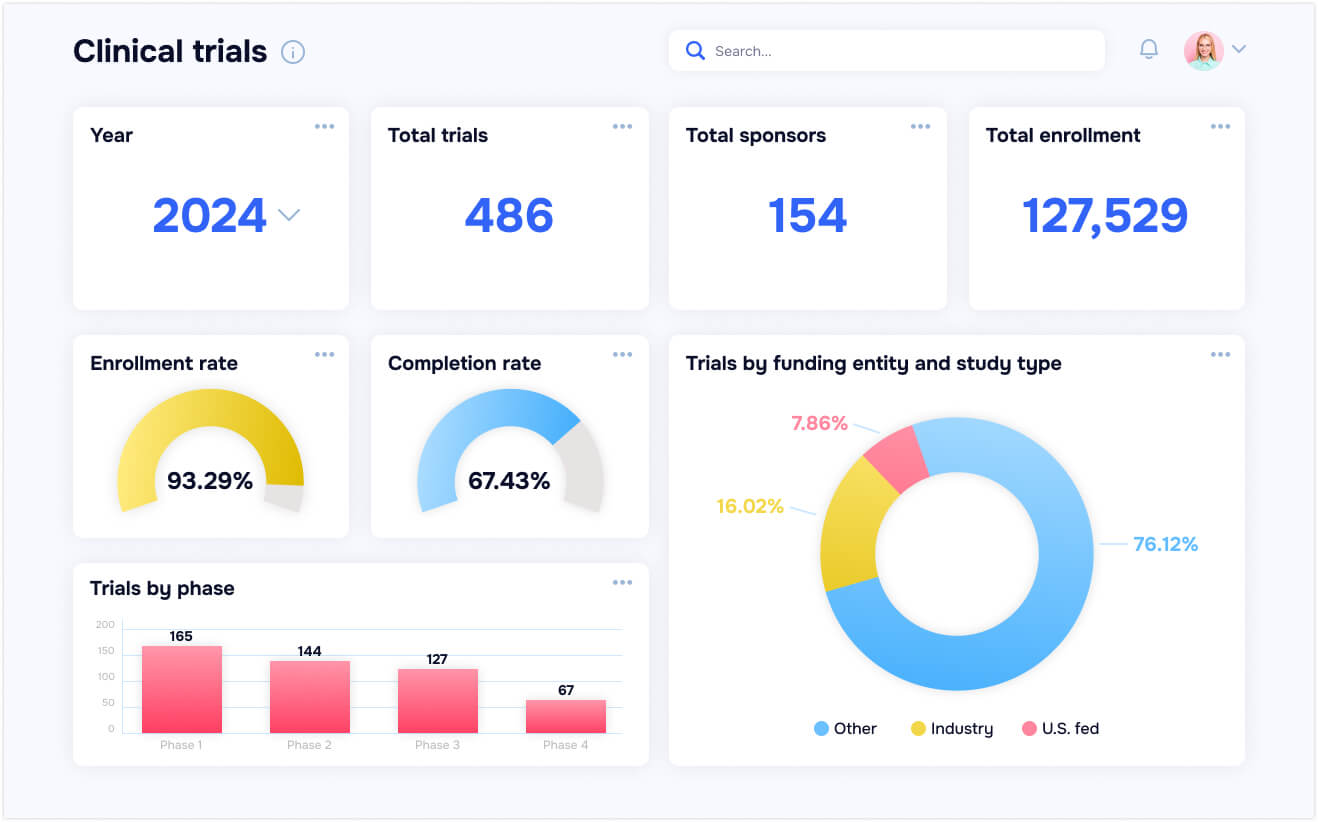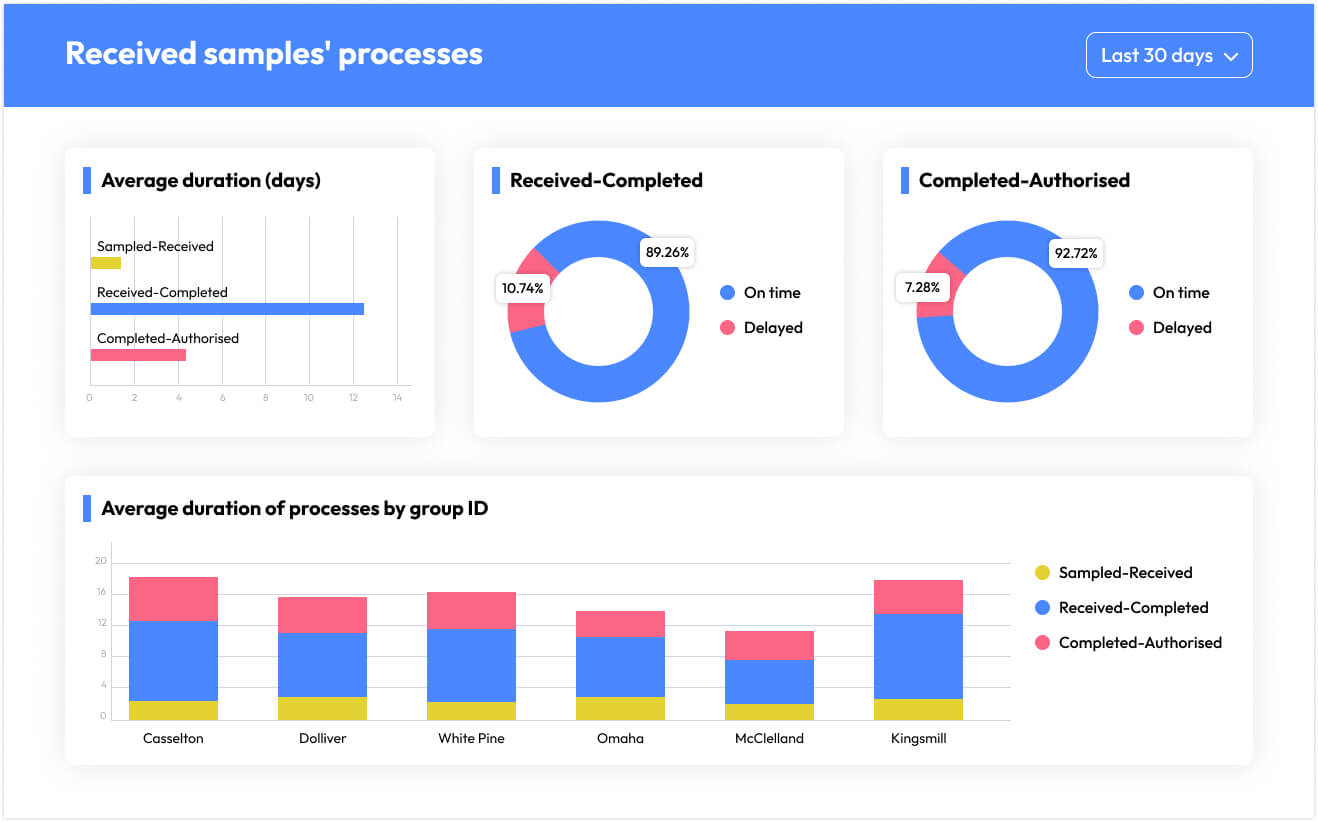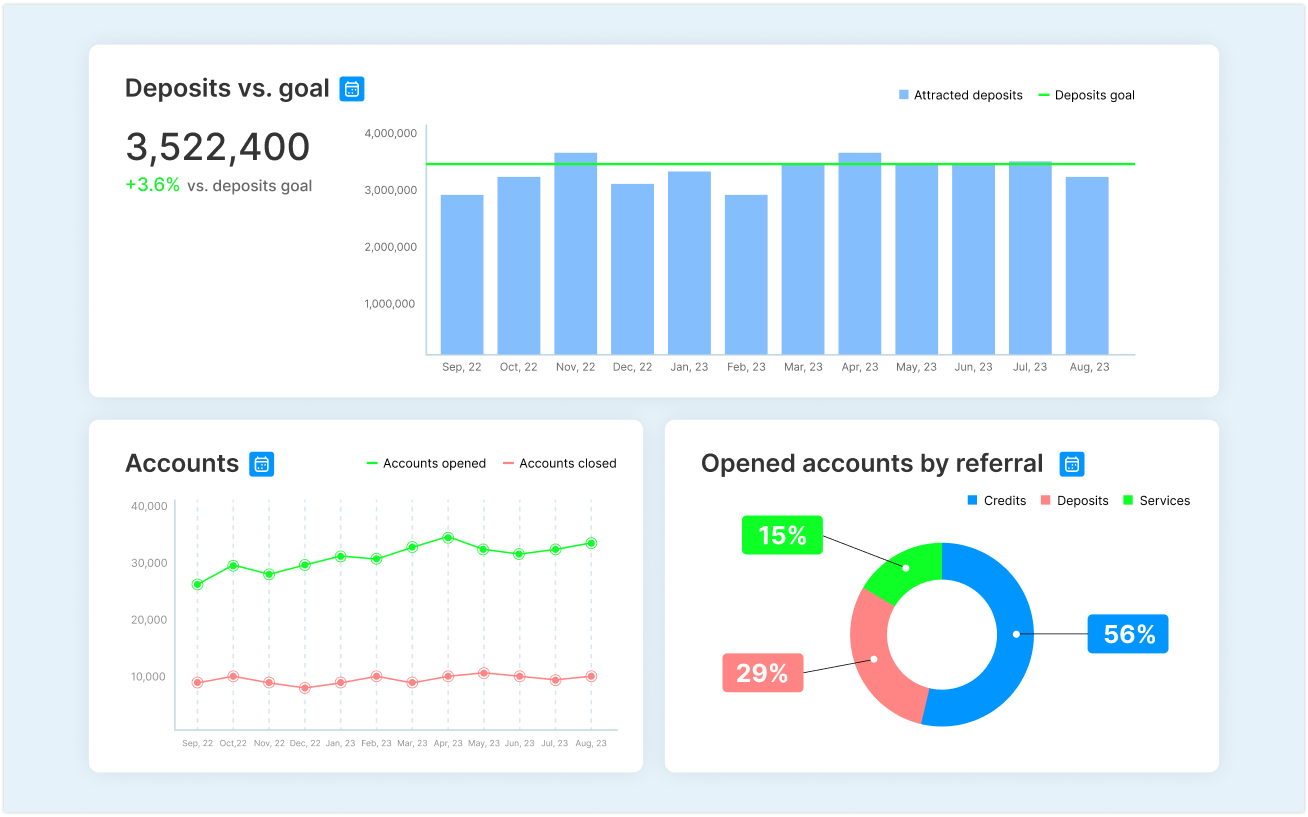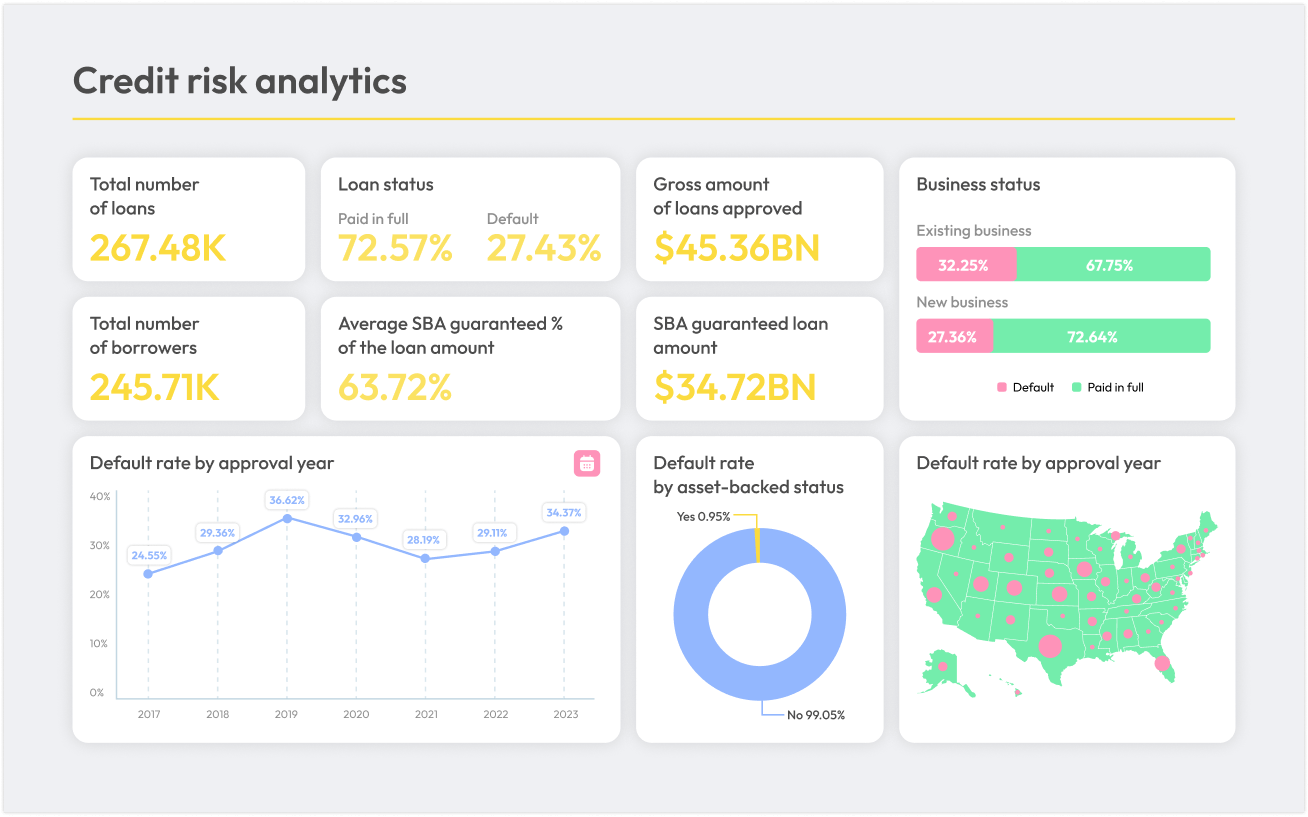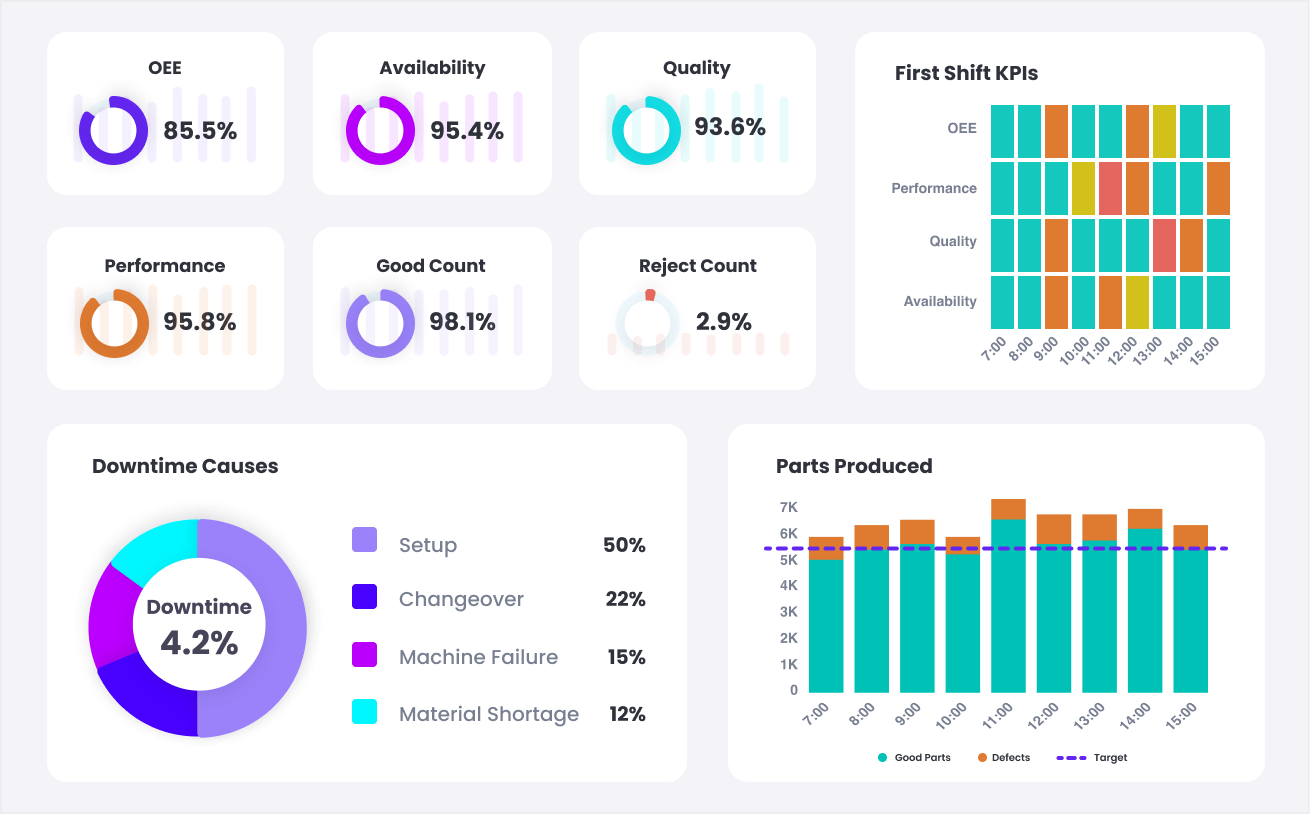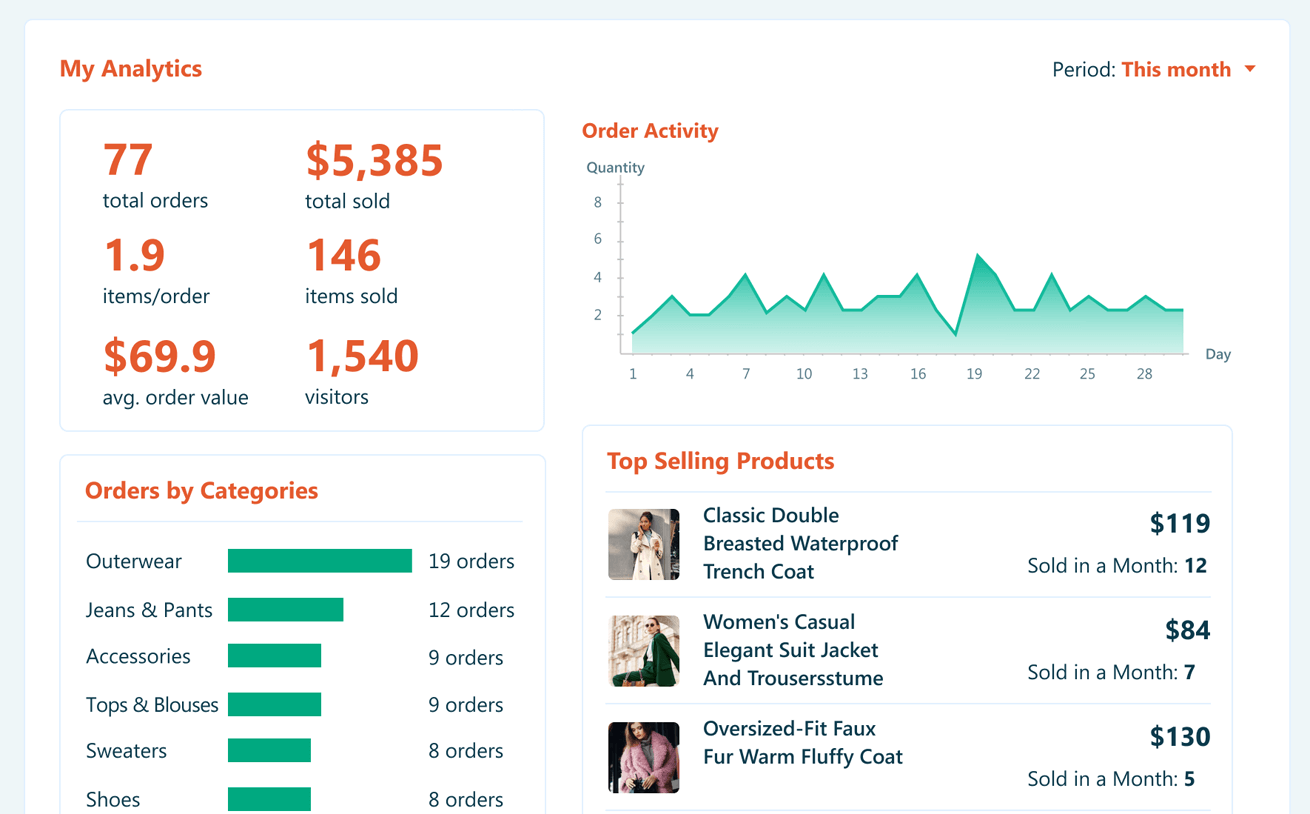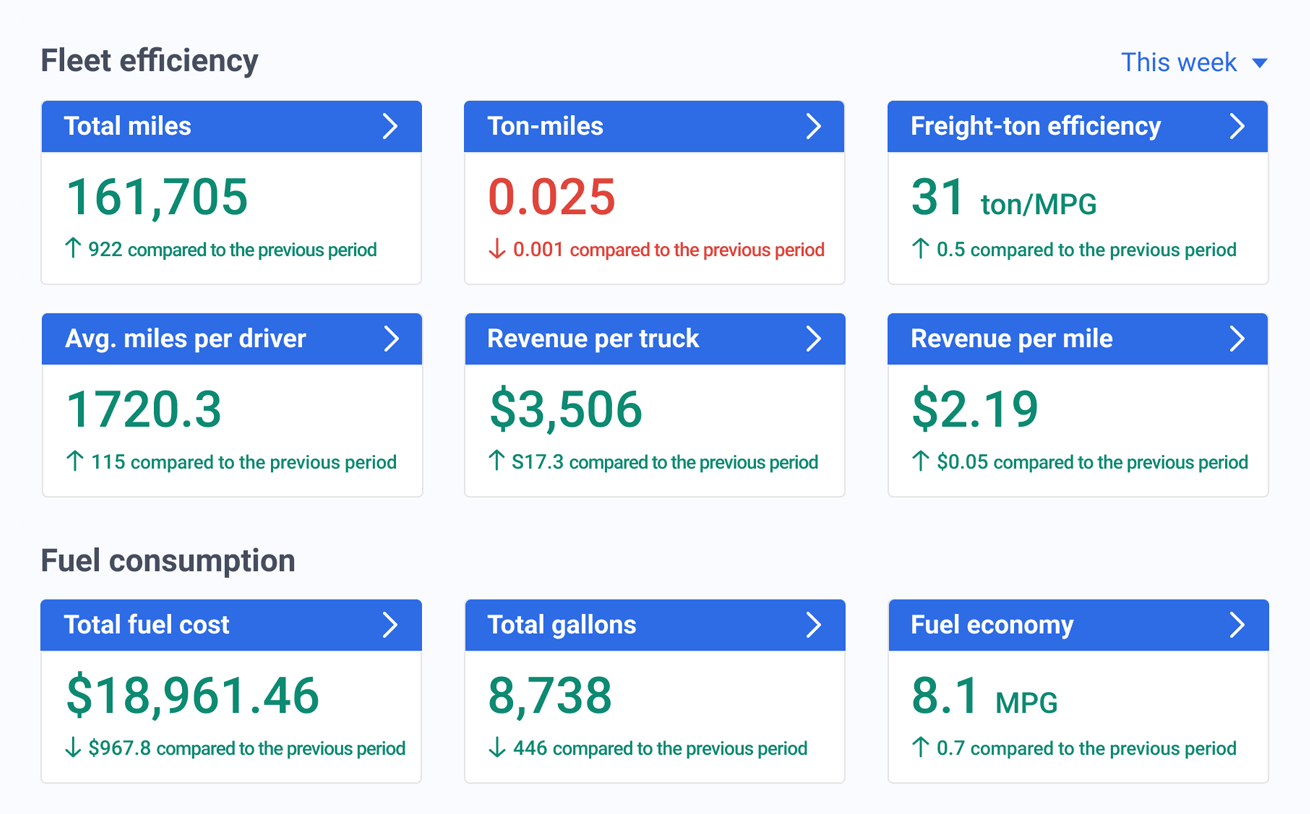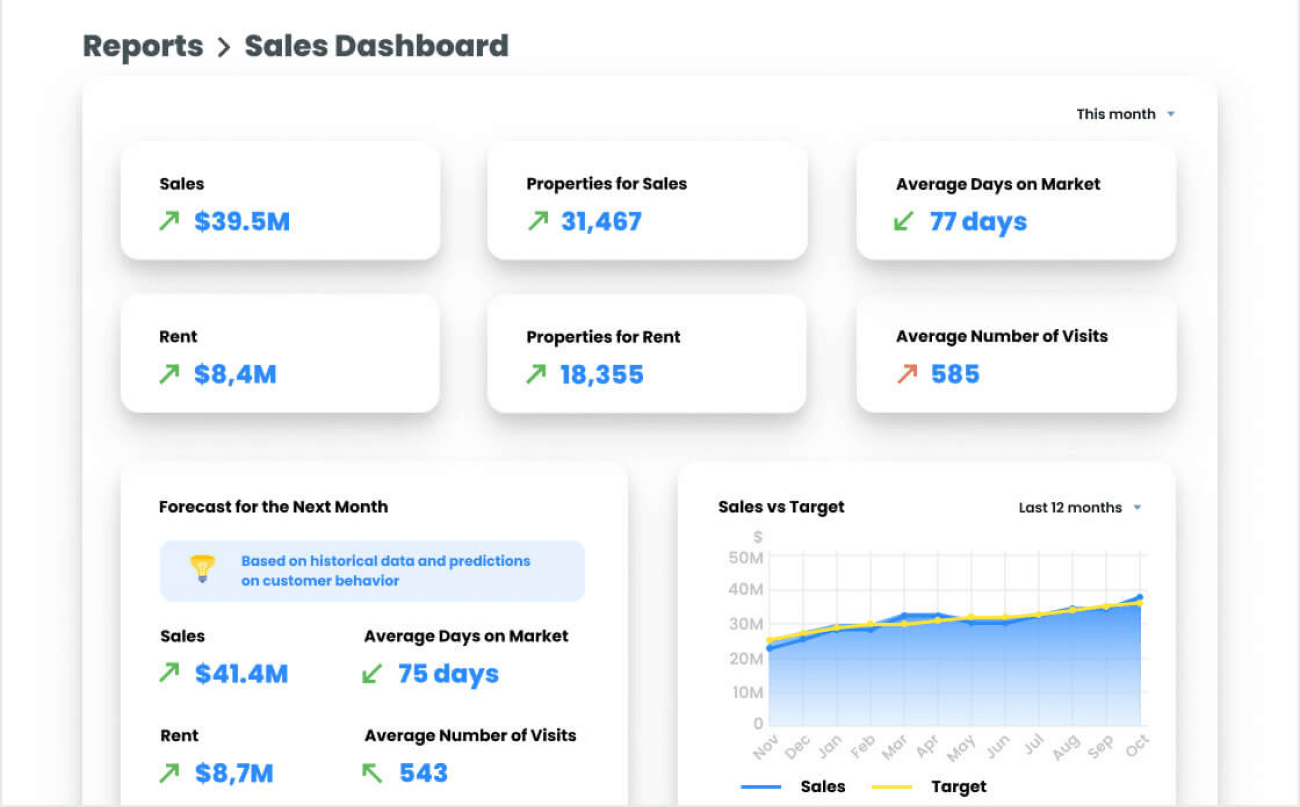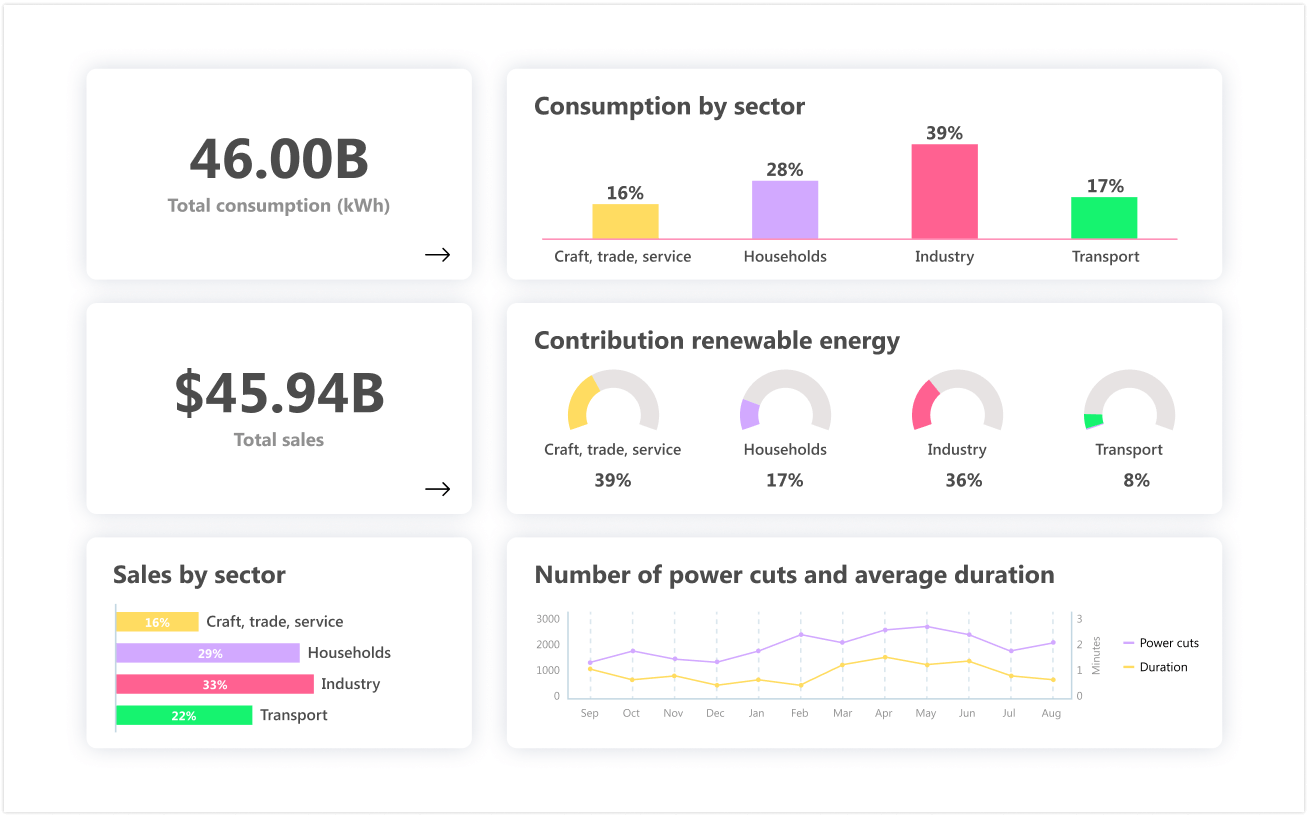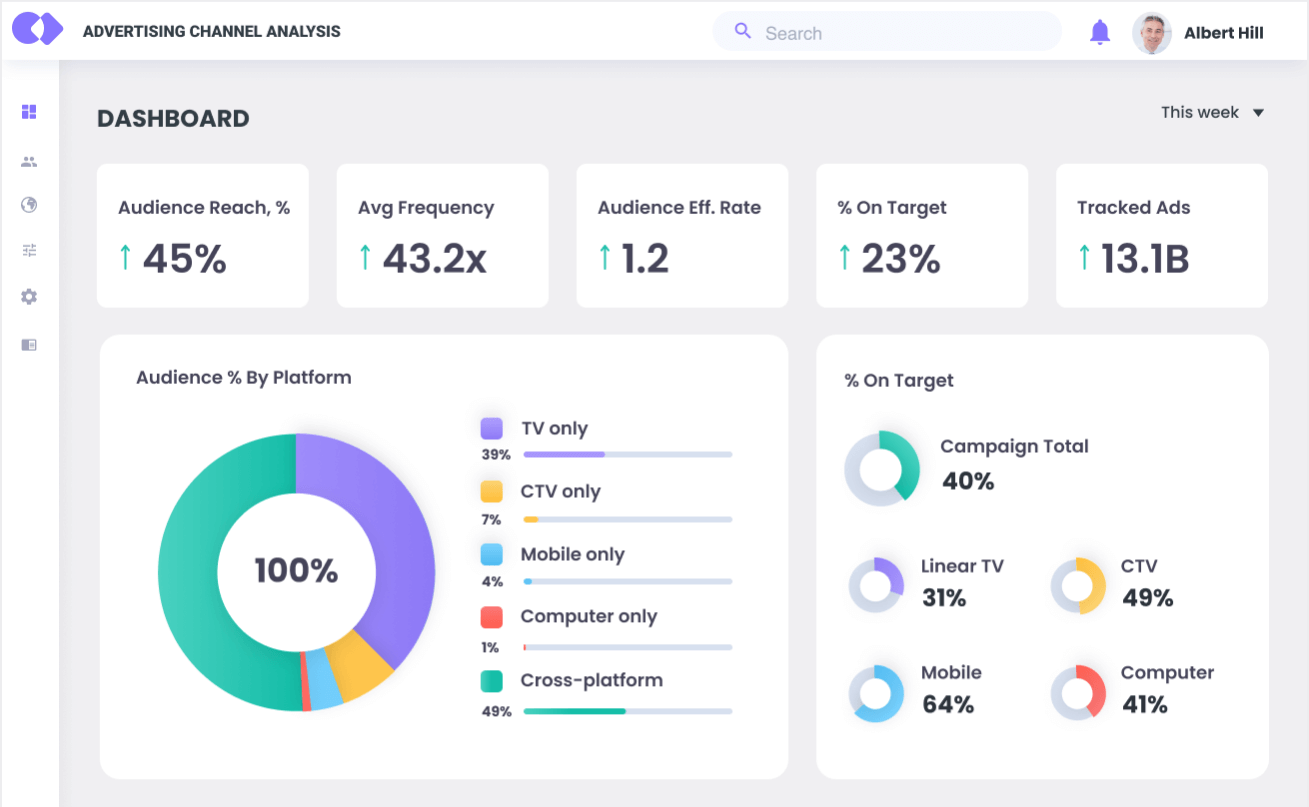Enterprise Business Intelligence
Key Features, Benefits and Costs
With experience in data analytics since 1989, ScienceSoft designs and implements tailored business intelligence solutions that enable enterprise-wide data consolidation, analytics, and reporting.
Enterprise BI in Brief
Enterprise business intelligence (BI) is a comprehensive solution that centralizes multi-formatted data from various company divisions, enabling secure access and data analysis for business users of all levels.
Challenges enterprise BI solutions address:
- Data of different types and structures across disparate systems with different data models.
- Data quality issues stemming from poor data management practices and manual data processing.
- Data inconsistency (inconsistent definitions across departments, spelling differences due to different locations, etc.).
- Inability to secure sensitive data.
- Varying data analytics and reporting needs.
- Data aggregation specificity for different countries and regions (e.g., different tax and accounting rules).
- Different levels of data maturity across the enterprise.
Development time: from 18 months.
Costs: $600,000–$1,500,000, depending on solution complexity. You can get a custom ballpark quote in our free online calculator.
Required development team size: 15-17 IT experts.
High-Level Architecture for an Enterprise Business Intelligence Solution

Data integration layer
To extract, transform and load data from the data sources into the target storage. In enterprise-scale BI solutions, ScienceSoft introduces a staging area, temporary storage that helps ensure data integrity and quality by enabling:
- Standardization of data across multiple data source systems.
- Data deduplication.
- Identification and removal/update of invalid data from the source systems.
- Data pre-aggregation, etc.
For enterprise-wide data storage, its further analytical querying and reporting, ScienceSoft recommends introducing a data warehouse and its subsets specific to business lines – data marts. Data marts make it easier for a particular group to securely query business data relevant for this group. A data storage layer may also include an operational data store and a data lake.
Data analytics layer
- To analyze historical data and real-time data with data mining tools, OLAP tools, etc.
- To build predictive models and run what-if scenarios with ML services.
Data reporting layer
- To run ad hoc queries with self-service BI tools.
- To create charts, heat maps, diagrams, etc., with data visualization tools.
Data presentation layer
- Pre-built and custom reports, dashboards, and scorecards to view all kinds of business data.
- Interactive dashboards and web portals with drill-down capabilities, filtering functionality, and configurable views for real-time data access.
- ML-based recommendations and prescriptions, alerts and notifications.
Key Features of an Enterprise Business Intelligence
With experience in 30+ industries, ScienceSoft builds BI solutions tailored to the specifics of each domain. Below, we share the core functionality of BI solutions for enterprises.
Check Industry-specific BI Solutions
Healthcare
Banking, Financial Services and Insurance
More industries
Important Integrations for a Business Intelligence Solution
To enable transparent business intelligence across the enterprise, the solution should integrate with all the existing data sources. Typical data source integrations include:
Enterprise resource planning (ERP) system
The integration enables:
- Getting a consolidated view on the overall performance of the enterprise, each subsidiary, division, department.
- Reporting on the current state of business operations on all levels – from a department to the entire enterprise.
- Budgeting and financial planning for each division, department, subsidiary and the whole enterprise.
- Predicting revenue and cash flows.
- Conducting performance analytics, etc.
Customer relationship management (CRM) system
The integration enables:
- Analyzing customer behavior to develop tailored sales and marketing campaigns.
- Predicting customer churn, developing retention strategies and estimating their ROI.
- Generating recommendations and prescriptions (e.g., offering a discount to a particular customer segment to get the maximum revenue increase from it).
Financial management software
The integration enables:
- Monitoring revenue, expenses, payroll to measure the profitability of the whole enterprise and its subsidiaries and departments.
- Financial planning and budgeting for the enterprise and its subsidiaries, divisions, departments.
- Financial risk forecasting and mitigation, etc.
Human resources (HR) management system
The integration enables:
- Employee performance monitoring and analysis across the whole company, its subsidiaries, separate departments and divisions.
- Employee experience and satisfaction analysis.
- Employee retention strategy development and optimization.
- Employee hiring strategy development and optimization, etc.
Supply chain management system
The integration enables:
- Real-time visibility into each component of the supply chain.
- Supplier performance analysis.
- Spend and demand forecasting.
- Forecasting the optimal level of inventory to meet the demand and prevent stockouts.
- Defining fuel- and cost-effective delivery routes and schedules.
- Predicting order fulfillment rates.
- Supply chain risks management, etc.
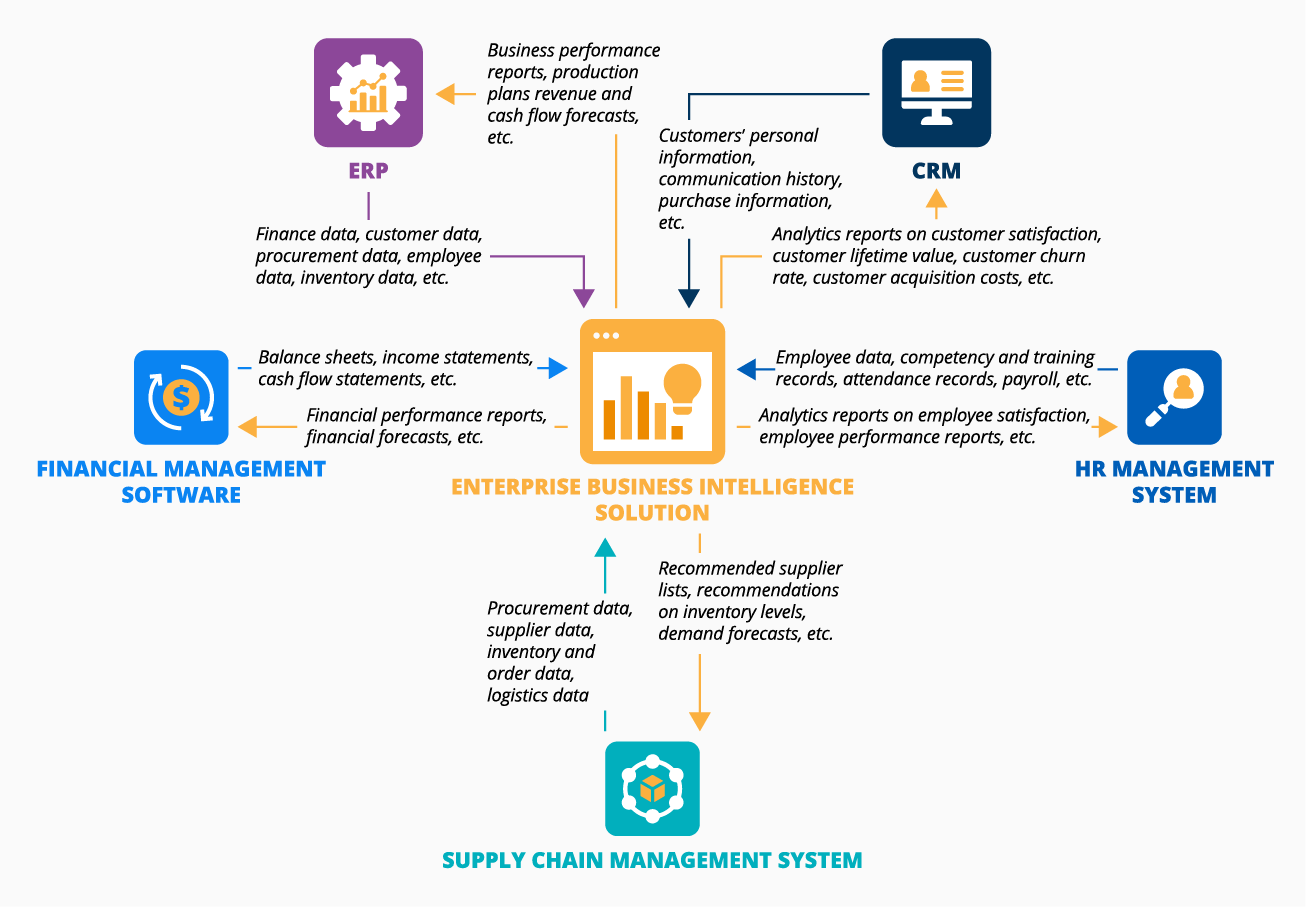
How to Ensure the Success of Enterprise Business Intelligence
Based on our experience in business intelligence since 2005, our consultants have defined the core factors on which the success of enterprise BI relies:
Solution scalability
The enterprise business intelligence solution architecture should be flexible to scale across all dimensions (data volume, number of users, reporting diversity, concurrent users, etc.) without compromising performance, overcomplicating administration and driving up costs. Also, the solution should allow for seamless integration with an increasing number of data sources and the addition of new data repositories, e.g., a data lake, an operational data store.
Data governance
Smooth processing of voluminous data, data consistency, minimized data latency, and data safety are only possible if strict data governance standards and policies are in place. They usually include:
- Entity-relationship diagrams.
- Data flow diagrams.
- Data integration policies and standards.
- Rules for data quality.
- User authentication and authorization policies.
- Data access policy.
- Data audit policy.
- Business glossaries and data lineage traceability documents.
Self-service analytics and reporting
The appliance of machine learning techniques for the automatic generation of insights allows business users to conduct granular data analysis on the fly with no IT team involvement. An intuitive interface (drag-and-drop functionality, support for natural language querying, customizable dashboards, etc.) also streamlines user adoption and helps maximize return on BI investments.
Cost Factors of Enterprise Business Intelligence
The cost of enterprise business intelligence implementation varies greatly depending on a number of factors, such as:
- Number of data sources, their integration capabilities, existing data models, etc.
- Business data complexity (in terms of size, structure, variety, etc.).
- Complexity of business data cleansing.
- Complexity of the data storage layer (data warehouse, data marts, a data lake, etc.).
- Types of analytics required (presence and number of ML algorithms, if streaming or big data analytics is required, etc.).
- Complexity of the data reporting layer (number and complexity of reports, including ad hoc reports, number of dashboards, if custom data visualization is required, etc.).
- User permission system complexity.

The cost of an enterprise BI solution, which involves developing a data warehouse with data marts, OLAP cubes, self-service reports and dashboards, may vary from $600,000 to $1,500,000.
Want to know a precise figure for your case?
Benefits Enterprise BI Brings to Businesses
The implementation of enterprise business intelligence enables:
- Data-driven decision-making at the strategic and operational levels.
- Increased productivity of business users and the elimination of the communication bottlenecks across departments, branch offices or subsidiaries due to quick and secure access to high-quality business data consolidated from across the whole enterprise.
- Decreased time-to-insight due to convenient self-service business intelligence capabilities.
- Enhanced data accuracy, consistency and security due to the centralized data governance approach.
- Saved time of IT staff and data analysts due to automated data management procedures (data collection, transformation, cleansing, structuring, modeling, etc.).
- Data democratization and expansion of data literacy across the enterprise.
Enterprise BI Software
Below, we describe top 3 solutions that we most frequently use for designing and implementing enterprise BI:
Microsoft Power BI
Best for
Enterprise-wide business intelligence.
Description
- Business data ingestion with 120+ native data source connectors, including pre-built connectors for relational databases, operational databases, a data lake, big data sources, etc.
- Self-service data preparation and analytics capabilities for Power BI users to create tailored data reports and dashboards in minutes.
- Incorporating Power BI content into other applications with Power BI Embedded.
- Restricting data access with row-level security.
DEMO: Watch our Power BI demo.
Pricing
- Free plan.
- Power BI Pro - $9.99/user/month.
- Power BI Premium: $4,995/dedicated cloud storage and compute resources/month, $20/user/month
Azure Synapse Analytics
Best for
Description
- Integrating business data from 90+ data sources across the company’s divisions, subsidiaries, etc., to perform analytical querying in seconds.
- Reporting on all management levels, from C-suite to department heads, managers and supervisors, is protected with a fine-grained data access control.
Pricing
- On-demand pricing: $1.20/hour (DW100c) - $360/hour (DW30000c).
- Reserved instance pricing can save up to 65% over the on-demand option (in a 3-year term).
- Data storage: $122.88/TB/month.

Amazon Redshift
Best for
Big data warehousing.
Description
- SQL querying of exabytes of structured, semi-structured, and unstructured business data across a data warehouse, operational data stores, and a data lake.
- The business data can further be analyzed with big data analytics and ML services.
- End-to-end data encryption, granular row-level and column-level security controls.
Pricing
- On-demand pricing: $0.25 - $13.04/hour.
- Reserved instance pricing offers saving up to 75% over the on-demand option (a 3-year term).
- Data storage (RA3 node type): $0.024/GB/month.
Note: No charge for the amount of data processed.
Consider Professional Services for Enterprise BI
With experience in data analytics since 1989, ScienceSoft helps enterprises implement business intelligence to get a unified view of enterprise-wide data and make accurate data-driven decisions. With established project management practices, ScienceSoft guarantees project success regardless of time and budget constraints.
Consulting
- Enterprise BI needs analysis.
- Enterprise BI solution conceptualization, architecture design and tech stack selection.
- Enterprise BI implementation planning (milestones, risk management planning, optimal sourcing model, defining KPIs for measuring BI software quality, etc.).
- Business case creation, including cost estimation, time budget estimates.
Implementation
- Analysis of enterprise BI needs and drawing up BI software requirements.
- Conceptualization and tech selection for an enterprise business intelligence solution.
- Iterative solution development.
- Enterprise BI solution quality assurance.
- After-launch support and optimization.
About ScienceSoft
ScienceSoft is an IT consulting and software development company headquartered in McKinney, Texas. Since 2005, we provide BI consulting and implementation services for enterprises. Being ISO 9001 and ISO 27001 certified, ScienceSoft relies on a mature quality management system and guarantees that cooperation with us does not pose any risks to our clients’ data security

